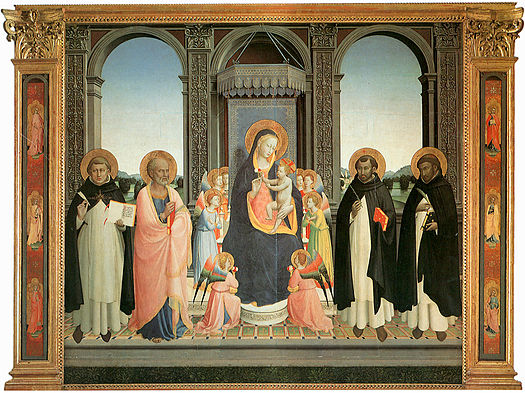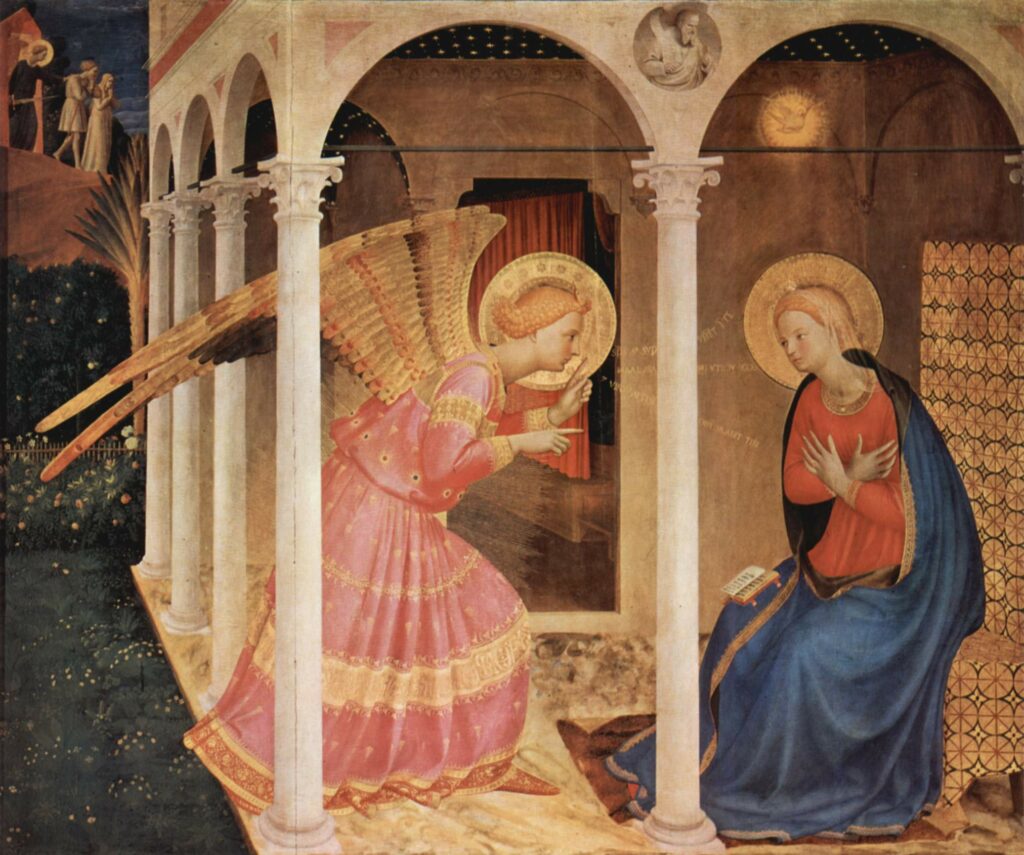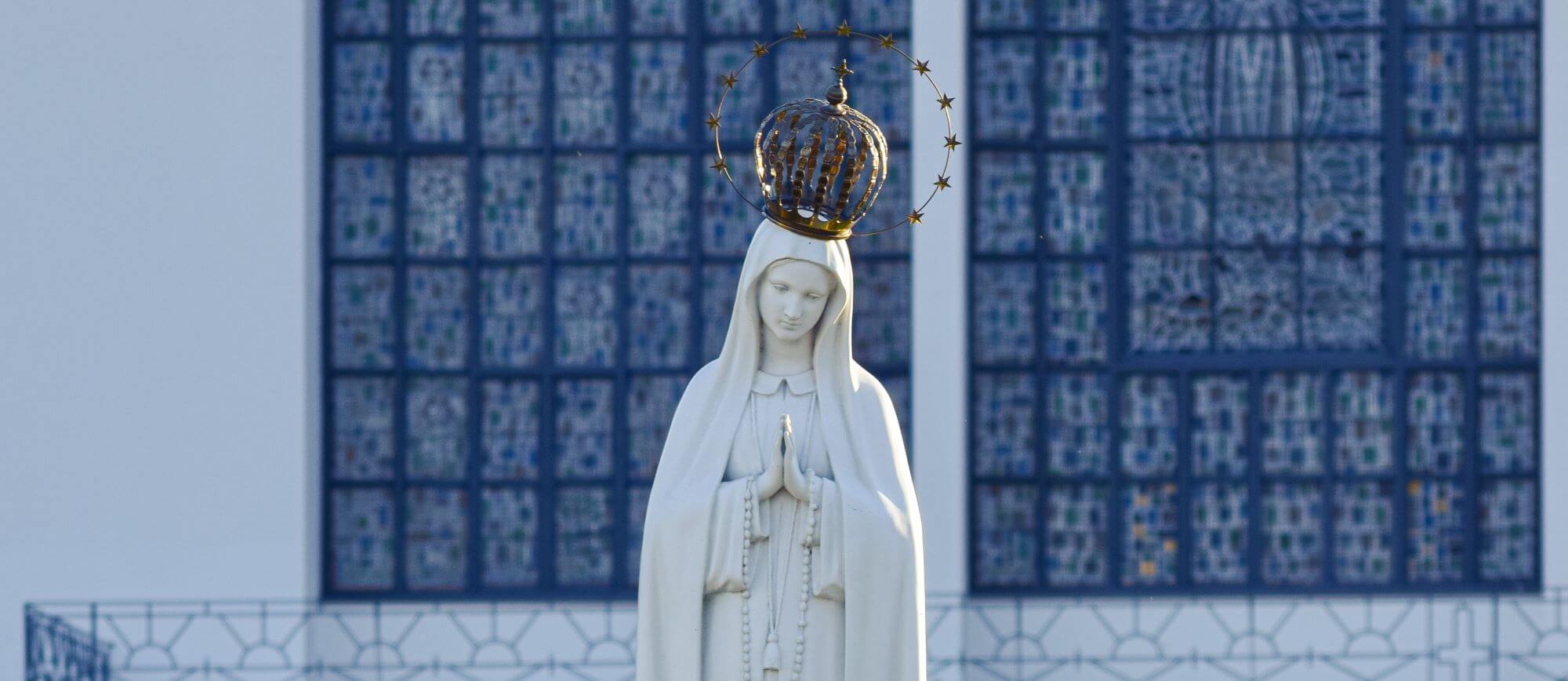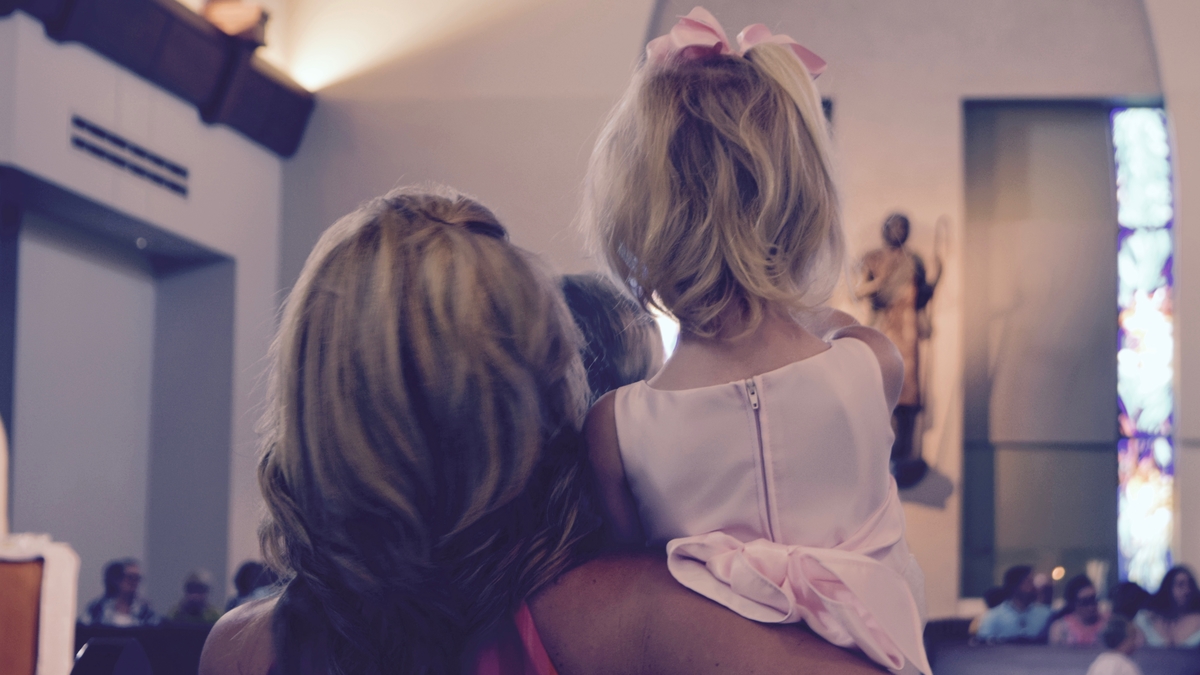
Relatively little is known about the life of early Renaissance painter Fra Angelico. Born in Vicchio, Tuscany with the given name Guido di Pietro, Angelico lived during the early ages of the Renaissance and right at the geographical center of it. The Tuscan city of Florence, with its powerful Medici family, quickly became the cultural center of the European world. Despite the whirlwind of development and exchange during his lifetime, Bl. Angelico spent most of his life in prayerful work in Dominican monasteries. It is this devotion that permeates his work and cements his status as one of the most masterful artists of the Renaissance.
This devotion, in fact, permeated his whole life and led to his humble holiness and eventually his title, given to him by Pope St. John Paul II in 1983, of Blessed.
The usage of the name Fra Angelico dates back centuries before his beatification. Translating to “Angelic Brother,” Fra Angelico’s name is similar to one commonly attributed to another great Dominican saint, St. Thomas Aquinas, “the Angelic Doctor.” It is unclear when this became a common appellation for Fra Angelico, but what is clear is that his transcendent paintings and his serene holiness warrant the comparison.

During Fra Angelico’s lifetime, many great artists were striving to innovate, rise to fame, and build their careers by association with wealthy patrons. Born into this particular time and place, Fra Angelico’s rise to artistic prominence was different from that of his contemporaries. It is unclear whether Fra Angelico entered into a workshop; if he did, it was most likely the workshop of Lorenzo Monaco (ca. 1370–1425), a Camaldolese monk and the leading painter and manuscript illustrator of the time.
Whether he learned under Monaco or not, Angelico chose not to continue his education in the typical form. Rather than entering into a guild or an apprenticeship as was the common practice, Angelico entered the religious life in a Dominican monastery in 1418 and formally became a Dominican friar in 1425. While records of sales from 1418 show that he was operating as an independent artist at this time, Angelico humbly exchanged his personal career for the communal life of the Dominicans. Painting mostly missals and other holy books, Fra Angelico helped spread the Dominican commitment to truth and beauty through his talent.
Fra Angelico’s early paintings were nearly all commissions for Dominican friaries. Three of these works adorned his own friary in Fiesole. He painted its principal altarpiece, depicting Our Lady and the Infant Christ surrounded by angels and flanked on either side by St. Thomas Aquinas, St. Barnabas, St. Dominic, and St. Peter of Verona. This early work already shows some of Bl. Angelico’s thematic maturity and artistic emphasis. The framing of the Madonna and Christ became a signature of his, one that was often replicated and which inspired many other Renaissance painters.

Bl. Angelico spent a large portion of his career dedicated to projects within the monastery of San Marco, where he and some other friars moved in 1436. He was thus unable to produce many independent panel paintings during these prolonged years. At the summons of the Vatican, he moved to Rome in 1445 where, over the next four years, he frescoed a number of chapels in the Vatican Palace for Pope Eugenius IV and his successor Nicholas V. Fra Angelico served a two-year term as prior of his friary in Fiesole before returning to Rome in 1453.

Continually glorifying God through his work, Fra Angelico’s art moved many others to do the same. When looking at works from his life, one can see the penetrating recognition of God’s omnipotence and goodness, as well as the recognition of the beauty of humility.
Fra Angelico is sometimes described as having a near perfect talent, something rare and, in a sense, otherworldly. His paintings and frescoes were completed with an effort of his whole self. In the tradition of icon painters, Fra Angelico believed in painting as a type of prayer. Tradition says that he wept continuously while painting some Crucifixion scenes. His work was simple—his figures were usually unadorned and carefully arranged. Yet, his straightforward painting raises the viewer to contemplation of God. He skillfully used expression and posture in his figures to portray the faithfulness that he sought to exemplify in his own life.

When one looks with care upon the faces and expressions of Angelico’s characters, especially his Madonnas, one sees devotion and humility. The serene countenance on Our Lady’s face in his depiction of the Annunciation exemplifies the holiness that Bl. Angelico himself strived for. She is not shocked or afraid; rather, in her peaceful disposition you perceive a palpable sense of readiness and humility. With her love of God as the foundation of her life, Our Lady was prepared to answer His call. Similarly, Fra Angelico strove to devote himself to God and his art demonstrates the grace that flows through one’s willingness to live in accordance with God’s will.

His characters’ humility and holiness is unsurprising when one recognizes Bl. Angelico’s own personal commitment to the same. During his life amongst his Dominican brothers, he gained a reputation for his calm humility and modesty. He embodied these words which are commonly attributed to him: “He who does Christ’s work must stay with Christ always.”
Bl. Fra Angelico died while working in Rome. Buried there in a humble grave with a simple marble slab, the epitaph on his tomb reads: “When singing my praise, don’t liken my talents to those of Apelles. Say, rather, that, in the name of Christ, I gave all I had to the poor. The deeds that count on Earth are not the ones that count in Heaven. I, Giovanni, am the flower of Tuscany.”
Blessed Fra Angelico’s life and art remind us of the importance of beauty in our faith. Without the the ability to recognize and contemplate beauty, we will suffer in our ability to recognize God, of Whom the Psalmist wrote: “One thing I have asked from the Lord, that I shall seek: That I may dwell in the house of the Lord all the days of my life, To behold the beauty of the Lord and to meditate in His temple.” In Bl. Angelico’s art, one can observe the truth which the beauty reflects. Space and light—through his artistic and holy use of them—become schools of theology, highlighting the awesome reality of the God of the heavens Who brought Himself down to earth and become incarnate in human flesh.
Through a structuring of figures, buildings, and light, Bl. Angelico would often highlight the divinity of God and the holiness of Our Lady by spatially framing them. His influential use of framing echoes the internal framing one must do in prayer. In our own lives we must frame our day-to-day existence with the reality of God and the intercession of Our Lady. In this way, we will direct ourselves to keep our gaze steady at the beauty of Heaven, and in doing so, we will find that the tasks of our daily lives fall into place more readily.
Today, as we celebrate the feast of Bl. Fra Angelico, let us be inspired by his commitment to portraying the beauty of our faith. We are urged to do so by the Church herself. At the Council of Nicaea, the Council wrote:
One of [the ecclesiastical traditions that have been entrusted to us] is the production of representational art; this is quite in harmony with the history of the spread of the gospel, as it provides confirmation that the becoming man of the Word of God was real and not just imaginary, and as it brings us a similar benefit.
… following as we are the God-spoken teaching of our holy fathers and the tradition of the catholic church — for we recognize that this tradition comes from the holy Spirit who dwells in her– we decree with full precision and care that, like the figure of the honoured and life-giving cross, the revered and holy images, whether painted or made of mosaic or of other suitable material, are to be exposed in the holy churches of God, on sacred instruments and vestments, on walls and panels, in houses and by public ways, these are the images of our Lord, God and saviour, Jesus Christ, and of our Lady without blemish, the holy God-bearer, and of the revered angels and of any of the saintly holy men.
The more frequently they are seen in representational art, the more are those who see them drawn to remember and long for those who serve as models, and to pay these images the tribute of salutation and respectful veneration. Certainly this is not the full adoration in accordance with our faith, which is properly paid only to the divine nature, but it resembles that given to the figure of the honoured and life-giving cross, and also to the holy books of the gospels and to other sacred cult objects.
Further, people are drawn to honour these images with the offering of incense and lights, as was piously established by ancient custom. Indeed, the honour paid to an image traverses it, reaching the model, and he who venerates the image, venerates the person represented in that image.
So it is that the teaching of our holy fathers is strengthened, namely, the tradition of the catholic church which has received the gospel from one end of the earth to the other. … clinging fast to the traditions which we have received.
The Church’s teaching (as defined at the Council) is that holy images help guide, teach, and increase our faith. They also raise our hearts and minds to the eternal things of God so that we can pray more easily. Contemplating holy images reminds us of our call to holiness and our duty to offer unceasing prayer to God.
Inspired by Bl. Fra Angelico, let us continue to be moved by beauty and contemplate the sacred reality that holy images help reveal.
Blessed Fra Angelico, patron saint of Catholic artists, whose art was aflame with love for Christ—pray for us!







